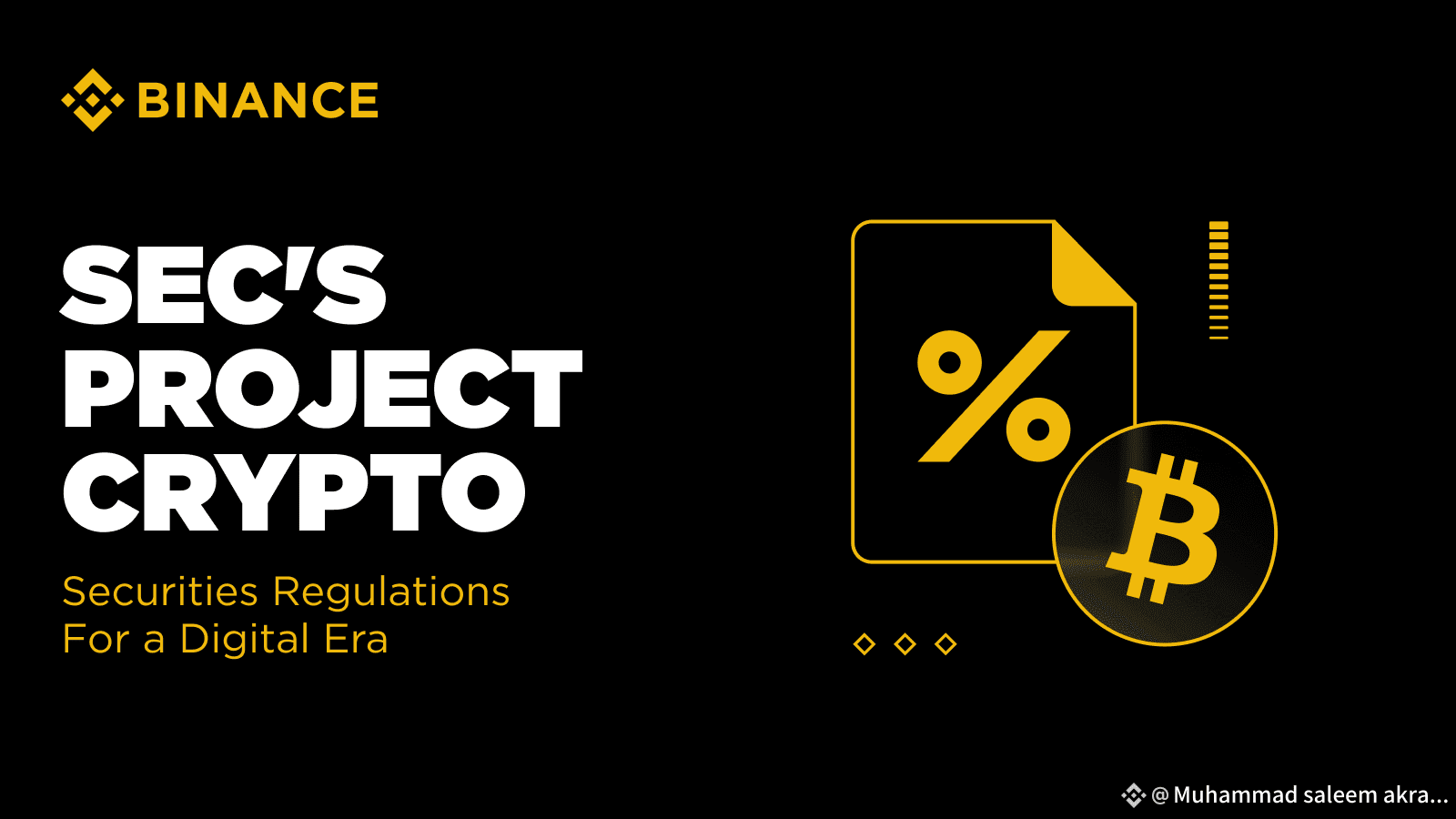Project Crypto, an initiative launched by the U.S. SEC last week, proposes a forward-looking framework for regulating digital assets, emphasizing safe harbor periods, functional token classification, custody clarity, and a unified license regime for integrated platforms.
This represents a fundamental shift from trying to apply outdated securities rules to blockchain technology – toward tailored, tech-native regulation.
The new approach builds on recent bipartisan legislation and global momentum toward clearer, more modern crypto oversight. For users and builders alike, it signals a future where innovation and compliance no longer have to be at odds.

In just over a year, the U.S. Securities and Exchange Commission (SEC) has moved from regulatory ambiguity and aggressive enforcement – under previous leadership – to the announcement of Project Crypto, a forward-looking initiative tailored to the realities of digital assets.
The launch of Project Crypto marks a key inflection point for both the U.S. and global crypto regulation – here’s why.
From Backward Compatibility to Forward Compatibility
Project Crypto reflects a growing consensus in Washington: that legacy securities laws were never built for decentralized protocols, tokenized assets, or real-time global platforms. Rather than continuing to retrofit 20th-century rules onto 21st-century architecture, the SEC is signaling a shift toward a modular framework, one that starts with how crypto functions in practice and builds regulatory clarity around that reality.
What’s emerging is a recognition that oversight must be designed for programmable assets, composable financial systems, and cross-border use cases, not paper stock certificates and closed-market assumptions. This is the real significance of Project Crypto.
Chairman Atkins has directed staff to explore functional classification of tokens and potential new mechanisms like safe harbors. Rather than defining tokens purely as securities or commodities, the proposed classification now considers how the asset behaves in a live network environment. With time-bound safe harbors, projects can operate with reduced legal risk during their early development phase, so long as they meet transparency, reporting, and consumer protection standards.
The proposal also provides updated guidance for custodians, clarifying liability boundaries, segregation requirements, and treatment of staking and self-custody, thus removing a longstanding hurdle for institutional adoption. Notably, the initiative also introduces the notion of a single license that could cover multiple functions such as trading, custody, payments, and other financial services under one regulatory roof. This nuanced approach allows for the efficiencies and innovation that vertically integrated models can offer in digital asset markets globally while ensuring user protections scale across all services.
A Broader Regulatory Evolution
Project Crypto builds on recent legislative momentum from Congress: it follows the GENIUS Act, signed into law – which gives dollar-backed stablecoins a dedicated legal path under clear reserve, disclosure, and AML requirements – and market-structure legislation currently advancing through House and Senate committees, signaling bipartisan support for digital assets.
Together, these developments reflect a maturing regulatory stance: from trying to “shoehorn crypto into legacy categories” to building purpose-built frameworks that foster innovation while safeguarding users.
What This Means for Builders, Users, and the World
For developers, the safe harbor provisions and functional classifications offer a practical path to build without fear of premature enforcement. For institutions, clear custody rules and licensing requirements lower the risk and cost of market entry.
For users, this means safer platforms, more innovation, and greater confidence that they’re participating in a market with real oversight rather than arbitrary enforcement action.
And for other jurisdictions, Project Crypto offers a reference point. If the U.S. can make digital asset regulation work within its complex legal and political system and a highly developed financial sector, it may set a benchmark for what responsible, innovation-friendly oversight looks like globally.
Final Thoughts
Finance is evolving at breakneck speed, and so must its rules. Project Crypto is the clearest sign yet that U.S. regulators are ready to move beyond outdated templates and begin designing digital-native regulation from first principles.
It’s still early: Debate, refinement, and politics will shape what follows. But the signal is unmistakable: a new regulatory architecture is emerging – one that recognizes decentralization, interoperability, and digital-native finance as features rather than bugs.
We at Binance welcome this direction. It validates compliance-first principles we’ve long upheld: segregated client assets, strong AML, transparent disclosures, and an integrated platform architecture that can scale globally and responsibly. These principles enable responsible innovation, benefitting users and strengthening the digital-asset ecosystem.